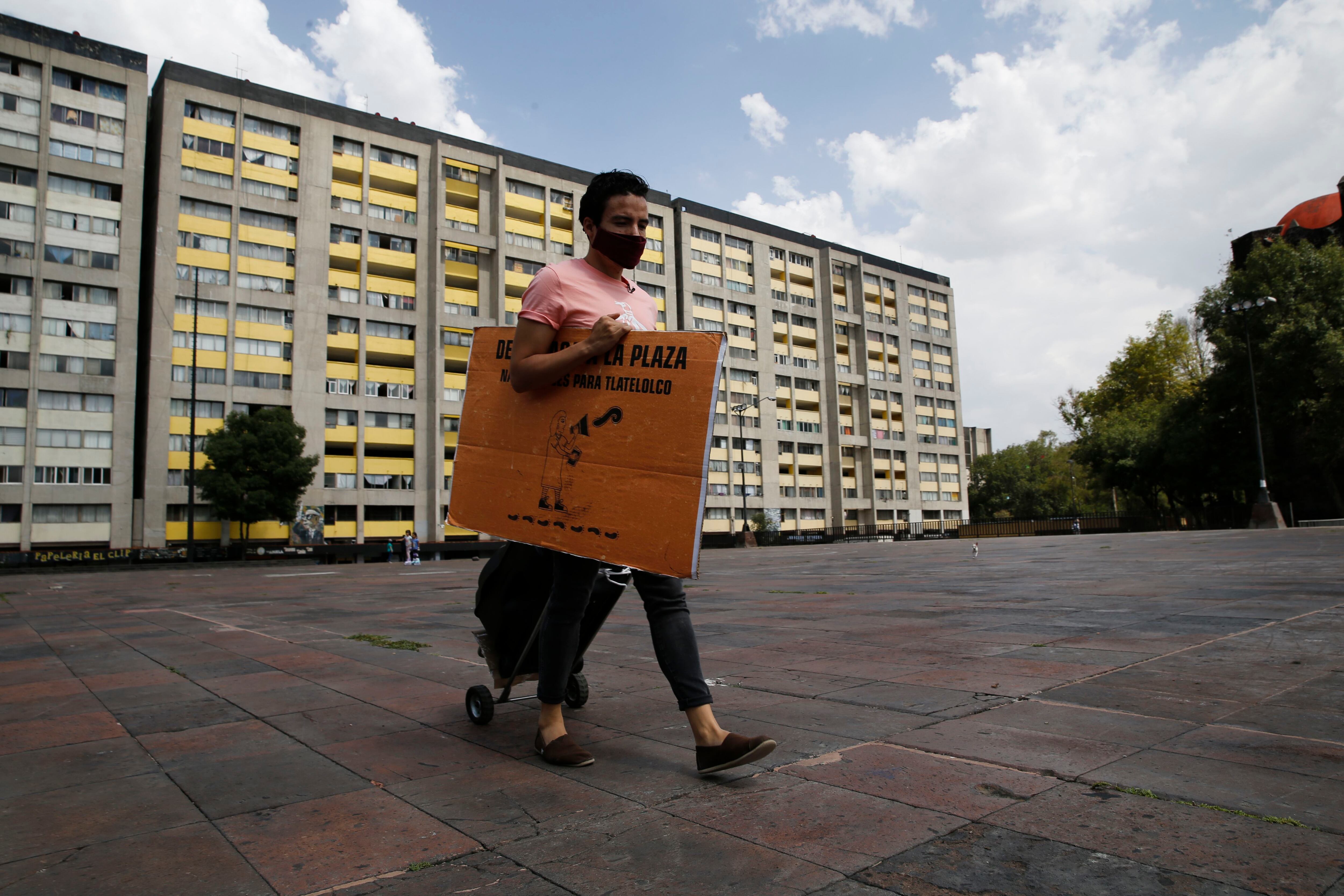
MEXICO City – Percibald Garcia identified that confinement throughout the coronavirus lockdown is especially wearisome for young children. So the youthful architect made the decision to study them stories.
Practically each day since the commencing of May, the 27-year-old has absent out in an massive Mexico City condominium intricate with his “wandering microphone” to broadcast stories to young children who acquire at their home windows to hear.
When most young children these days have cellphones, tablets or pcs, Garcia would like them to hear the human voice and the world of shared tales. He also would like them to recognize they can use, even from a distance, the general public plazas that have served as the anchor of existence in Mexico for centuries.
“We understood that almost no person was searching just after the way that young children ended up going through this lockdown,” Garcia explained Saturday.
Environment up his microphone in a single of the inexperienced areas that sit among rows of condominium properties, he study ”El Tlacuache Lunatico” (“The Outrageous Opossum”). It’s a tale by David Martín del Campo about a possum who suffers simply because he is so limited. The possum attempts to reach the moon to really feel taller. Once there, he eats the moon — and then has to determine out, with fellow animals, how to deliver it again. Other stories stick to the very same vein.
Garcia frequently precedes a tale by actively playing music by the celebrated Mexican children’s composer Francisco Gabilondo Soler, who carried out as Cri-Cri the cricket. From time to time other storytellers conduct, as does a puppet troop. And constantly, just as on Saturday, young children look at the home windows of the multistory setting up to get in the show.
In the end, it is an act of mutual comfort, equivalent to the Italians who serenaded every other from their balconies early in the pandemic, but also a cry to reclaim shared general public areas and stem the migration to a electronic, virtual world.
“In the very last a few months, every thing has absent on-line, —work, contacts, shopping,” explained Garcia. “This is an act of resistance in the experience of this ferocious digitalization we are going through.”
Rogelio Morales listened to the stories from the window of his grandmother’s condominium. Given that March, the 9-year-old has spent a great deal of his time actively playing movie games. “The only detail I go out for is to walk my dog,” he explained. “It’s a small uninteresting. I skip university.”
“It’s awesome,” Rogelio explained of the storytelling. “If we have some thing to do, or if we’re quite discouraged, we can take it easy a small.”
Luna Gonzalez, arrived with her mom, Tatiana Vega, to hear to the stories from a safe distance, both carrying experience masks.
“I think about the people, I think about what the animals are like,” explained Luna, who used the prospect to go out to dress up in her greatest. “Sometimes we go out, simply because I get bored at property.”
Garcia phone calls his challenge “De la Casa a la Plaza” (“From the home to the plaza”) — a reference to the city squares in which traditionally Mexicans have collected to socialize and share.
The pandemic strike this factor of existence really hard, simply because men and women have been inspired not to go out or acquire for concern of contagion.
It’s a custom that also has been altered in the modern-day neighborhoods of Mexico’s big metropolitan areas, in which shopping malls have frequently replaced plazas and parks as accumulating spots. But due to the coronavirus, the malls also have been purchased closed in Mexico City.
Garcia’s family members has lived in the capital’s Tlatelolco neighborhood since 1967, just a couple of several years just after it opened in 1964. It initially contained almost twelve,000 residences and distribute in excess of 232 acres (94 hectares). The governing administration-constructed intricate was erected throughout a time period when architects continue to felt they had to give open, communal areas, some thing non-public builders have mostly deserted.
“The general public plaza has been very significant in Mexico since the time of our ancestors,” since the Aztecs, Garcia famous. “It is in which men and women fulfill, discuss, in which the existence of a neighborhood develops.”
“The shopping mall is now the plaza, but it is non-public … you have to pay,” he additional. “This kills the general public plaza, kills the social buildings.”
Some young children have even approached Garcia to study their own stories, and other guest storytellers are invited to be a part of.
“This is an invitation to men and women to carry on making use of the general public plaza,” he explained.
It is not only young children who hear.
Rogelio’s grandmother, Maria Elena Sevilla, also leaned out her ground-ground window.
“This youthful guy will get a special reward from God, simply because it is not just young children he is entertaining, it is men and women of my age, far too,” she explained.
Copyright 2020 The Connected Press. All legal rights reserved. This material may not be published, broadcast, rewritten or redistributed without the need of authorization.